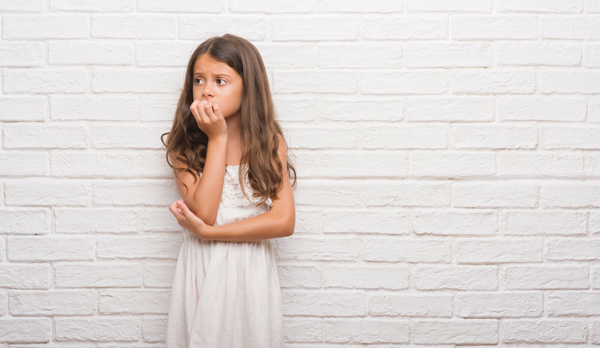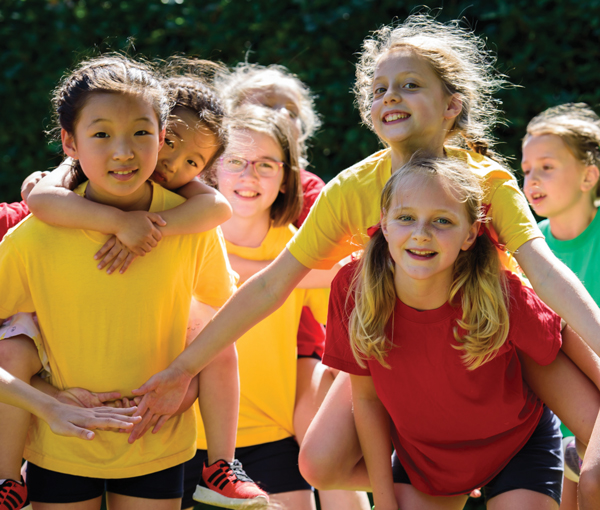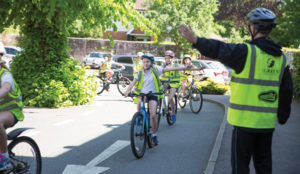
Are you finding it hard to get support?
Help is at hand…
Half of all lifetime anxiety disorders emerge before the age of twelve with around 15% of children being thought to suffer from an anxiety disorder.
(Anxiety UK)
A certain amount of this emotion is considered to be normal in everyday life but once it begins to impact upon a child in a negative and persistent way it becomes a problem. Sometimes it revolves around a child’s social life and friendship issues. It may be more about fear of failing academically. It could include uncertainty about the future, fear of the dark, problems sleeping and school avoidance. However it presents itself, there are some very useful cognitive behavioural techniques that may be used to help the child think in a different way about their problems.
Guided Parent Delivered Cognitive Behavioural Therapy (GPD-CBT) is a new evidence based service designed to support parents struggling to get help with their child’s anxiety. The programme which is being offered through the charity, Anxiety UK, has been designed to help increase parents’ confidence and empower them to support their child.
The positive impact that a parent can have in helping their child to overcome their problems should not be underestimated. This is emphasised throughout the sessions. There are a number of advantages to working solely with parents or guardians instead of with the child, not least the fact that parents are considered to be the experts on their own children.
CBT has been extensively researched.
It is a solution focused time limited form of treatment and one which is most often recommended by the NHS to patients needing support for a number of mental health problems.
The therapist registered with Anxiety UK to deliver these sessions, will work collaboratively with parents, providing them with strategies they can use at home to help their child, between the age of seven and 12, overcome anxiety.
Four one hour sessions are conducted with the parents face-to-face, by phone or web cam and two 15 minute sessions take place over the phone or via web cam. The support package includes a copy of ‘Helping your Child with Fears and Worries: A self-help guide for parents’ by Professor Cathy Cresswell and Lucy Willetts.
Annabel Marriott is registered as an Anxiety UK GPD CBT practitioner.
For further information or to arrange an informal chat about Guided Parent Delivered CBT, Toolkit for Anxiety workshops or self-help groups, please email Annabel at: annabel@toolkitforanxiety.com
www.toolkitforanxiety.com


 In the first term, establish a good rapport with your child’s teacher and encourage their early reading and writing at home as advised by the school. Ask what happens in the book that they are reading, and help with extending their vocabulary to include words such as ‘first, second, finally.’ Don’t be scared to use the correct vocabulary –
In the first term, establish a good rapport with your child’s teacher and encourage their early reading and writing at home as advised by the school. Ask what happens in the book that they are reading, and help with extending their vocabulary to include words such as ‘first, second, finally.’ Don’t be scared to use the correct vocabulary – the first year your child will be very attached to their first teacher and the school will prepare them for moving on to a new class, possibly with new pupils arriving too which can change the dynamic amongst the class. Over the first long summer break encourage more constructive play which requires your child to build things, take things apart and put them back together. Go on walks, build dens in the garden, start to ride a bike with stabilisers. Check table manners and correct use of cutlery and ‘please and thank yous.’ Use the days of the week more and continue with reading and basic writing.
the first year your child will be very attached to their first teacher and the school will prepare them for moving on to a new class, possibly with new pupils arriving too which can change the dynamic amongst the class. Over the first long summer break encourage more constructive play which requires your child to build things, take things apart and put them back together. Go on walks, build dens in the garden, start to ride a bike with stabilisers. Check table manners and correct use of cutlery and ‘please and thank yous.’ Use the days of the week more and continue with reading and basic writing. Then come swimming lessons, possibly picking up an instrument for the first time, presenting in assembly and taking on minor roles of responsibility within the class (taking a message to the office or assisting with classroom chores). You will increasingly feel that you are not there for every milestone moment. This is important as your child will be forming a self-esteem based on their sense of their own achievements and by six we hope finding intrinsic motivation. They will be working out that effort impacts outcomes and they will be turning to peers to share their achievements. Winning the sack race, learning their times tables, holding the door open for a visitor, sharing their snack at break are all equally important.
Then come swimming lessons, possibly picking up an instrument for the first time, presenting in assembly and taking on minor roles of responsibility within the class (taking a message to the office or assisting with classroom chores). You will increasingly feel that you are not there for every milestone moment. This is important as your child will be forming a self-esteem based on their sense of their own achievements and by six we hope finding intrinsic motivation. They will be working out that effort impacts outcomes and they will be turning to peers to share their achievements. Winning the sack race, learning their times tables, holding the door open for a visitor, sharing their snack at break are all equally important.

 At our school, our children are driven by our ethos ‘Consideration Always’. As role models to the school community and beyond, we entrust them to develop and demonstrate the best version of themselves. Children develop when they are given the opportunity to do so. Mary Myatt’s philosophy of ‘high challenge, low threat’ leadsthe way.
At our school, our children are driven by our ethos ‘Consideration Always’. As role models to the school community and beyond, we entrust them to develop and demonstrate the best version of themselves. Children develop when they are given the opportunity to do so. Mary Myatt’s philosophy of ‘high challenge, low threat’ leadsthe way.

 There’s no such thing as bad weather – just the wrong clothes, or so the saying goes…
There’s no such thing as bad weather – just the wrong clothes, or so the saying goes… 1 Seek out the animals who love the cold weather! You’ll find many types of animals in a farm park, especially those who just love the winter months. Highland cows are a great example of a hardy breed and they look pretty impressive even if a bit wet and bedraggled! Many of the farm attractions now have interesting ways to feed some of the animals yourselves, plus opportunities to book in for exclusive experiences – we have introduced a Mini Farmer experience and it has been a huge hit.
1 Seek out the animals who love the cold weather! You’ll find many types of animals in a farm park, especially those who just love the winter months. Highland cows are a great example of a hardy breed and they look pretty impressive even if a bit wet and bedraggled! Many of the farm attractions now have interesting ways to feed some of the animals yourselves, plus opportunities to book in for exclusive experiences – we have introduced a Mini Farmer experience and it has been a huge hit.











